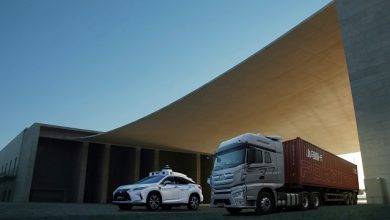onsemi’s Hyperlux now boosting NVIDIA for autonomous vehicles
SCOTTSDALE, Ariz. – Sept. 19, 2023 – onsemi announced that its Hyperlux™ Image Sensor Family drivers are now available on the NVIDIA DRIVE platform to enhance the vision of autonomous vehicles and improve safety. It offers best-in-class image quality that captures detail across any lighting condition.
One of the most critical features for autonomous driving is the vision system. The Hyperlux image sensors offer unparalleled detailed images and avoid blind spots without the need to change exposure settings. This provides the highest quality data for the NVIDIA DRIVE platform to process and make better, informed decisions quickly. Additionally, the sensors offer industry-leading low power consumption. This is combined with the efficient architecture of the NVIDIA platform, delivering the lowest power option available for autonomous vehicle (AV) operation.
NVIDIA DRIVE is an open, scalable AI platform that consists of hardware, software, and firmware. Furthermore, these components work together to enable the production of automated and self-driving vehicles.
Better Vision for Greater Safety
“Uncompromising image quality is imperative for autonomous vehicles. There is an expectation for the vehicles to perform better than human drivers,” said Chris Adams, vice president, Automotive Sensing Division at onsemi. “By offering Hyperlux as part of the NVIDIA DRIVE platform, automakers get a system that can see problems before drivers do and make better decisions to avoid them. This is a critical step to achieving fully autonomous driving.”
The Hyperlux Image Sensors are the only sensors available today that offer 150 dB high dynamic range (HDR) that can meet and exceed those expectations. For example, with Hyperlux Image Sensors, an AV can distinguish between a yellow and red stoplight at a distance. This is true even when facing a setting sun in a situation where human eyes would likely be blinded. Even in very low light, performance exceeds requirements with super exposure pixel technology. This technology captures people, animals, and objects that may be difficult to see while driving.
The Hyperlux sensors provide the NVIDIA DRIVE platform with essential information. They almost eliminate dropped frames, preventing the loss of critical details. This helps maintain clear pictures when other sensors need to adjust exposure mode. Without that delay, the system can see and make decisions on anything in view, including objects the human eye couldn’t see.
“Building public confidence toward self-driving means being able to offer the assurance. Moreover, these supercomputers-on-wheels can get you where you need to go, safely,” said Glenn Schuster, senior director of sensor ecosystems at NVIDIA. “With Hyperlux image sensors now part of our ecosystem, we can continue to provide our OEM and tier 1 customers with the best choices for their unique needs. This ensures the highest levels of system performance, functional safety, and cybersecurity.”
Reliable, Stable Performance
To ensure safety, image sensors need to be stable and perform, no matter what condition they are in. At extreme temperatures, image quality degrades. This makes the overall system less effective for perception tasks such as object detection and classification. The Hyperlux family avoids degradation with its ability to work at spec performance. It also delivers best-in-class image quality for both viewing and sensing applications across the entire automotive temperature range, from -40°C to 125°C. The Hyperlux Family has the ability to achieve a clear image, even in hot conditions. It can also capture fast-moving objects, car headlights, and flickering lights for higher system safety.




